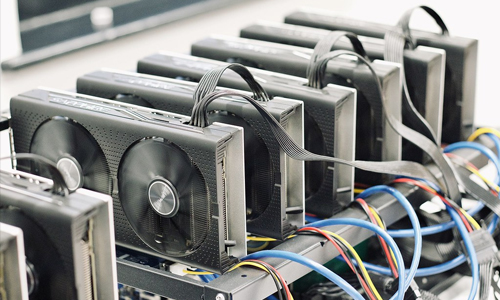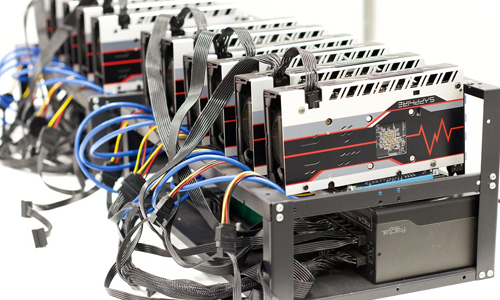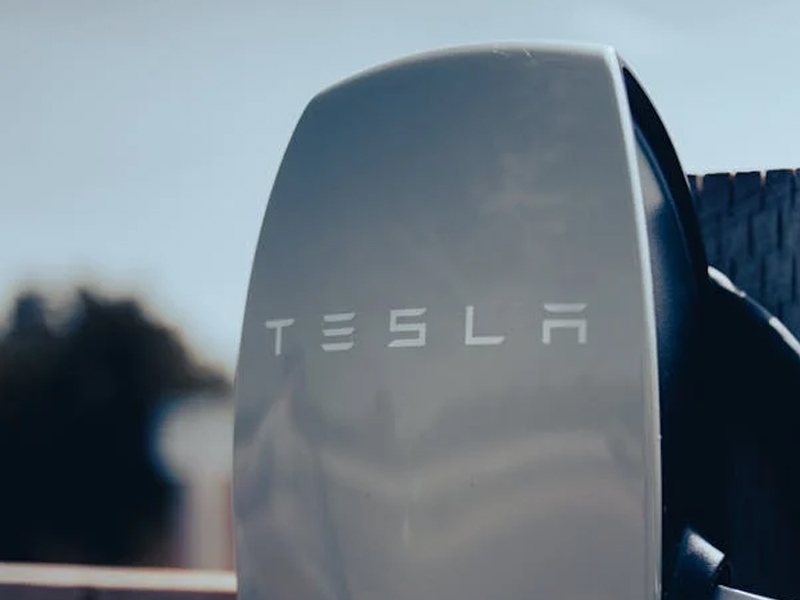The High Price of Crypto: Environmental Cost of Mining and Solutions for a Greener Future

Blockchain
Lifting the Hood: Unveiling the Energy Guzzling Monster of Crypto Mining
 Cryptocurrencies like Bitcoin rely on a process called “proof-of-work” to verify transactions and generate new coins. This process involves complex mathematical calculations solved by powerful computers. Here’s where the environmental impact story begins.
These mining computers operate 24/7, consuming vast amounts of electricity to maintain optimal performance. Studies by the Cambridge Bitcoin Electricity Consumption Index estimate that Bitcoin mining alone uses more energy than entire countries like Argentina or Chile [1]. This translates to a significant carbon footprint, with estimates suggesting Bitcoin mining contributes to a not-insignificant portion of global greenhouse gas emissions.
Cryptocurrencies like Bitcoin rely on a process called “proof-of-work” to verify transactions and generate new coins. This process involves complex mathematical calculations solved by powerful computers. Here’s where the environmental impact story begins.
These mining computers operate 24/7, consuming vast amounts of electricity to maintain optimal performance. Studies by the Cambridge Bitcoin Electricity Consumption Index estimate that Bitcoin mining alone uses more energy than entire countries like Argentina or Chile [1]. This translates to a significant carbon footprint, with estimates suggesting Bitcoin mining contributes to a not-insignificant portion of global greenhouse gas emissions.
Beyond Carbon Emissions: The Ripple Effect of Crypto Mining
 The environmental impact of crypto mining extends beyond carbon emissions. Here are some additional concerns:
The environmental impact of crypto mining extends beyond carbon emissions. Here are some additional concerns:
E-waste
The constant churn of mining hardware leads to a growing problem of electronic waste (e-waste). Disposing of this e-waste responsibly requires proper infrastructure, which is often lacking in regions with a high concentration of mining operations.Water Usage
Cooling these high-powered computers requires significant amounts of water, placing a strain on already stressed water resources in some parts of the world.Noise Pollution
Mining facilities can generate significant noise pollution, disrupting communities and impacting local wildlife.A Greener Future for Crypto: Sustainable Solutions on the Horizon
The environmental cost of crypto mining cannot be ignored. Fortunately, there are solutions emerging to pave the way for a more sustainable future of digital currencies:Shifting to Proof-of-Stake
Some cryptocurrencies are already exploring alternative consensus mechanisms like “proof-of-stake.” This approach requires significantly less energy compared to proof-of-work, offering a more environmentally friendly alternative.Renewable Energy Integration
Mining facilities can leverage renewable energy sources like solar and wind power to reduce their reliance on fossil fuels. This shift towards clean energy represents a crucial step towards sustainable crypto mining.Increased Efficiency
Advancements in hardware and software can optimize the mining process, reducing the overall energy consumption required to generate new coins.The Role of Consumers and Regulators
Consumers have a role to play in promoting sustainable crypto practices. Researching the environmental impact of the cryptocurrencies you invest in and choosing those with a commitment to sustainability is a powerful step. Additionally, governments and regulatory bodies can play a crucial role by implementing policies that incentivize sustainable mining practices.The Future of Crypto: Striking a Balance Between Innovation and Sustainability
Cryptocurrencies offer immense potential for financial innovation, but this progress cannot come at the expense of our planet. By embracing sustainable solutions and fostering collaboration between industry leaders, regulators, and consumers, we can navigate towards a future where cryptocurrencies thrive in harmony with the environment. The road ahead requires collective action and a commitment to building a greener digital landscape. The question remains: can we harness the power of cryptocurrency innovation while ensuring a sustainable future for generations to come? Only time will tell, but the exploration of sustainable solutions offers promising pathways towards a future where cryptocurrencies shine brightly without leaving a dark stain on the environment.Frequently Asked Questions?

01
Mobile Technology
iPhone Repair Just Got Easier: No More Disabling Find My Before Service
May 4, 2024

01
Tech news
Tech for a Greener You: Apps to Empower Your Sustainable Lifestyle
May 3, 2024

01
Internet of Things
Tesla’s Robotaxi: A Driverless Future on the Autobahn (or Freeway)?
May 2, 2024

01
Tech Gadgets
Don’t Trash Your Tech! Combating E-waste & Embracing Responsible Gadget Disposal
Apr 30, 2024
SUSBSCRIBE TO OUR NEWSLETTER
Join our subscribers list to get the latest news and special offers.
iPhone Repair Just Got Easier: No More Disabling Find My Before Service
Tech for a Greener You: Apps to Empower Your Sustainable Lifestyle
Tesla’s Robotaxi: A Driverless Future on the Autobahn (or Freeway)?
Meta Llama 3: Jack of All Trades, Master of None (But Still Free!)